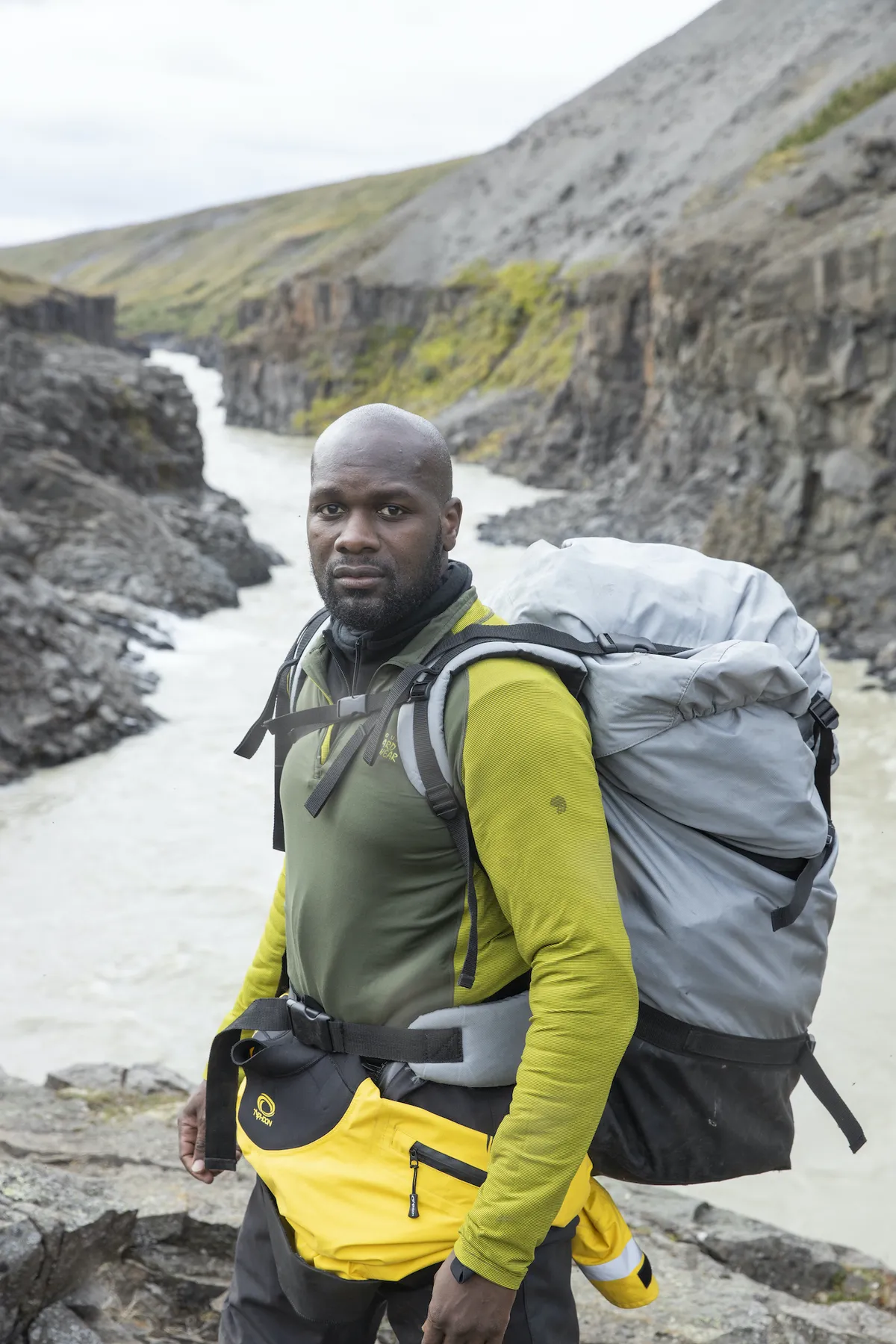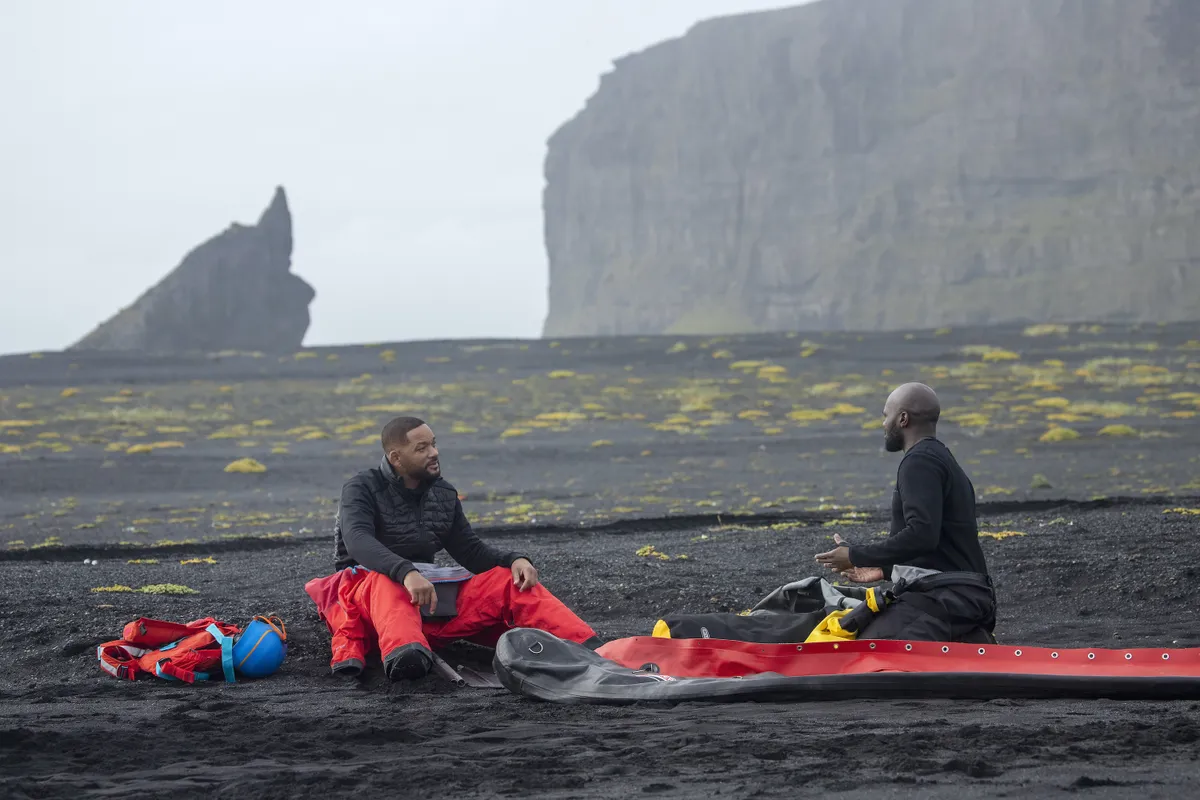Where to watch Welcome To Earth
Welcome To Earth is available to stream on Disney Plus from 8th December 2021.
Watch the trailer for Welcome To Earth:
What is Welcome To Earth about?
Following the success of his One Strange Rock documentary series in 2018 for National Geographic, Will Smith once again explores our extraordinary planet.
This time he’s meeting up with professional explorers, vulcanologists and marine biologists to experience the Earth’s most amazing places. From diving into the ocean in a submersible to kayaking through a gorge in Iceland, it’s a thrilling journey with Will as our curious and excited host.

Interview with explorer Dwayne Fields

How did it feel to meet Will Smith, and to take him out into the wilderness?
Gosh, it sounds cliché to say it was a dream come true, but this was one of the biggest stars in the world in one of the coolest environments. It blew my mind.
Why was Iceland chosen as the location to take him?
One of the things about Iceland is that the landscape is so alien, it’s so barren and epic. We wanted to introduce the audience to a foreign place, and there’s so few places where you can take that many staff logistically, particularly with the variety of habitats – glacier, rivers, oceans, and more. Iceland is this place that’s constantly changing with its volcanic activity.

Most big cinematic productions tend to go to Iceland because it’s accessible because it’s this environment is so vast and different to what we’re all used to.
At one point, this might have been the biggest productions taking place in the world because of pandemic restrictions, 100-odd people on the ground at one point, with 10 to 15 people just looking after safety at one point. I wish I knew who everyone was, because I’d love to thank them all individually, it was a huge undertaking.
Were there any moments of real fear, for either of you, during filming?
Will is the kind of person that doesn’t let fear hold him back, and I saw moments of that. There would be times when we’d be talking before heading out, and say he is isn’t a strong swimmer, but he would smile and carry on. His safety and security teams went ahead and they capsized, and they were brought ashore by the safety crews.
The visual of seeing people who are responsible for your safety, instantly you imagine that’s you. I had to make sure I didn’t give him a reason to feel anxious, so I had to act like this was normal and continued getting ready for us to go. He took a moment, a breath, to reset.

When we were standing at the top of the moulin (a hole within a glacier), getting ready to rappel down and talking about working with ropes, he said “I’ve done a little bit”. We went down in this hole, and you can hear the ice occasionally making a crack or crunch as it constantly moves. It’s the stuff that nightmares are made of.
But he just took a breath, and took it through in his stride. He took the role on of everyone watching this episode. He was anxious, but he handled it and was able to do it.
You're also in Costa Rica in this series, what were you doing there?
In that segment, without Will, I was looking at trees and the behaviour of wildlife. We saw so many amazing species – scarlet macaws, howler monkeys, snakes, scorpions, white-faced capuchins, toucans, morpho butterflies, olive ridley turtles, and more. We went out to find nest sites of the turtles, the eggs are taken into a secure area of the beach that’s fenced and the hatchlings are released into the wild.
How did you become a professional explorer and expeditionist?
A lot of it was serendipity, making the right decisions at the right time and learning from people. I went on a number of courses, such as walking to the North Pole and sea kayaking around the Caribbean. It's about increasing your skill set as much as you can whenever you can.
I wouldn’t call myself a professional, but rather a student of the craft. It was a great way to showcase what we can do, and invite people into this field who might never have considered these career paths. I can’t imagine many people will watch this and not want to do it.
What advice would you have for people that want to reconnect with nature?
I’d say this, this series is epic in every single sense of the word. Welcome to Earth is huge in terms of the visual and the sensory input. The viewer will be taken on a completely unexpected journey with Will and the explorers, they’re all amazing at what they do.
But this is one end of the scale. At the other end, it’s about doing things locally. Taking a moment to stop in your local park to look at anmals and plants. Introducing yourself to nature in small steps. Once you feel comfortable, head out to the countryside. Take yourself to a National Park. We are blessed to have so many beautiful places in the UK. Once you’ve got this love and respect for it, you’ll want to protect it.
Tell us about your #WeTwo Foundation
This is one of the things I’m most excited for and proud of. Phoebe Smith and I are still in the process of whittling down 700 plus names to the final 10. Every person I read about it is the perfect person to take.
In 2022, me and Phoebe will be taking ten people on the world’s first carbon negative expedition of its kind. We know what kind of science we’re going to be doing, and the cabins are booked. There will be a big focus on conservation, including taking phytoplankton samples, and undertaking whale and seal surveys.It’s going to be mind-blowing the experience that this people will have. Each time I take people out, they come back as developed people.
What else have you got planned for the future?
I’m currently working on a series with Nutopia for next year about going to really tough environments at really difficult times of year.
Main image: Will Smith descends into a volcano. © National Geographic for Disney+/Kyle Christy
